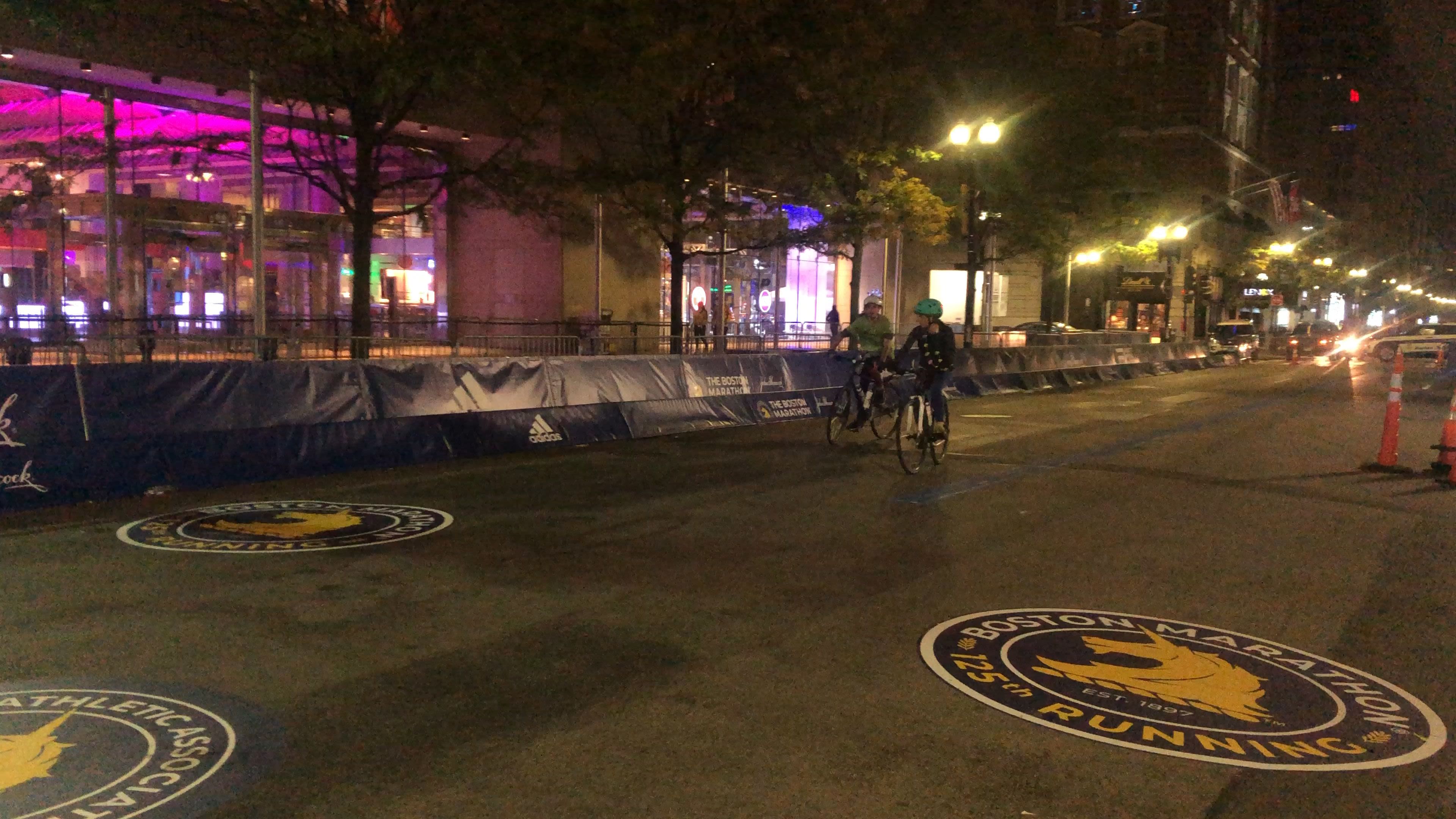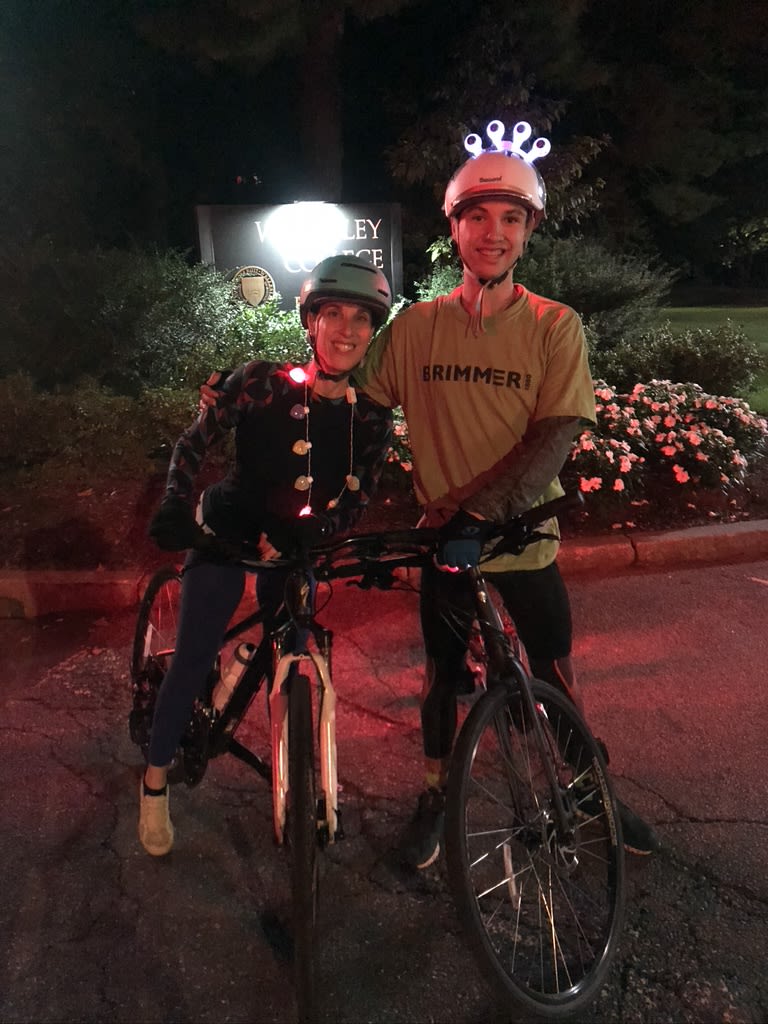Biking the Boston Marathon
The night before the race, hundreds of bikers completed the course. I was one of them.

Around the world, Boston is known as home to one of the most prestigious marathons in the world.
Starting in 1897 after the first modern Olympics in Greece, Boston has been a site for runners to take on the formidable course from Hopkinton to Boston. It is considered an honor to run the historic course, but how about biking the 26.2-mile stretch, at midnight?
That is what I did on the morning of the marathon, along with several hundred other bikers. A few minutes before the anticipated midnight hour, we lined up at the historic start in Hopkinton. Some took pictures, some checked their watch for midnight to arrive. As the clock struck twelve, droves of bikers took off from the starting line of the marathon.
As we passed through Hopkinton, we experienced support from people waiting on the sidelines, cheering us on in the dead of night. Fans yelled “cool lights, dude” to encourage riders to continue the grueling push.
As I reached mile seven, my legs started to fatigue (riding at midnight for 26.2 miles is not the easiest thing to do, so give me a break, okay?) I have ridden farther than this, but not at midnight, and certainly not as tired as I was that day.
Once I reached Wellesley College, I gained a boost of confidence. The women’s only college is known for its Scream Tunnel at mile 12 . I imagined hearing the screams as I passed by, even as the students weren't out quite that early.
At around 1:20 a.m., I finally hit the intersection of Washington Street and Commonwealth Avenue. I realized that I still had three hills to bike up, and that’s including the infamous Heartbreak Hill. As I crested the second peak and saw my street, I gained confidence once again.
However, this confidence was short-lived once I approached the base of Heartbreak Hill (and let me tell you, Heartbreak Hill sure breaks your heart 20.5 miles in). The incline does not get its moniker from the heartbreak and despair of runners— though it does just that.
The name comes from the 1936 elite men’s race when Ellison (Tarzan) Brown took a huge lead for the first 20 miles. However, at Heartbreak Hill, the year’s past champion, John Kelley, patted Brown on the back in a disrespectful way. This lit a fire under Brown and led him to victory, breaking Kelley’s heart, hence the title.
After Heartbreak Hill it was a relief to see Boston College. I knew the worst was over. We took the turn onto Beacon Street in pain, but eager to finish the last four miles. At 2:25 a.m., I could see the Citgo sign and the one-mile mark. And 5-minutes later, I crossed the finish line. My time was officially 2 hours and 31 minutes, slower than both elite runners this year. Benson Kipruto of Kenya finished the men’s race at 2:09:51 and Diana Chemtai Kipyogei crossed the finish line with the time 2:24:45. What a great feeling it was to complete the trek from Hopkinton to Boston, despite the state of my legs.
The next morning, I ended up hiking up Heartbreak Hill again, this time to cheer on the brave runners who decided to take up the monstrous Boston Marathon course.
I still can't believe someone would decide to run the course, never mind bike it. It was refreshing to see the crowds buzzing at Boston College, full of students, cheering on runners as they passed the Gothic-styled campus.
The Boston Marathon is an important piece of the city's culture. It's a great example of the best of society, coming together to cheer on runners no matter when they cross the finish.

Evan Michaeli and his mom, Elizabeth, at the start line at midnight.
Evan Michaeli and his mom, Elizabeth, at the start line at midnight.

Evan and his mom at Wellesley College.
Evan and his mom at Wellesley College.


